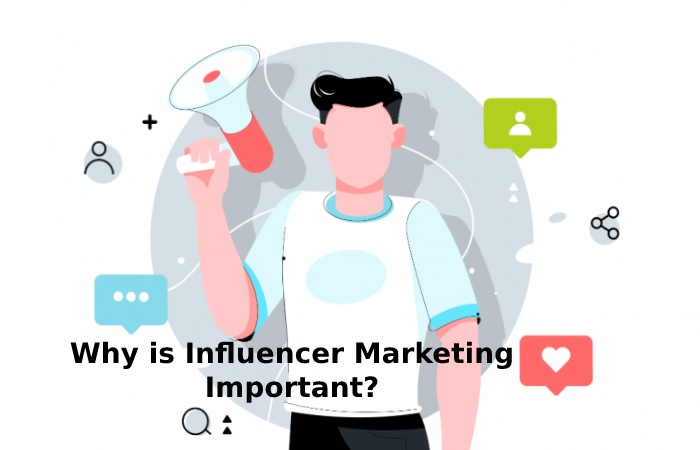Table of Contents
Introduction
Influencer marketing is a type of marketing that focuses on using key executives to get your brand message out to the larger market. Instead of marketing directly to a large group of consumers, inspire/hire/pay influencers to spread the word for you.
Influencer marketing goes hand-in-hand with two other methods social media marketing and also content marketing. Most influencer campaigns have some social media component, so influencers are expected to spread the word through their social channels. In addition, many influencer campaigns also include a content element where you create content for the influencers, or they make the content themselves. Although social media and content marketing often fit into influencer campaigns, they are not synonymous with influencer marketing.
Why is Influencer Marketing Important?

The influencer economy has forever changed the way we shop. Some 67% of marketers say they engage in some form of influencer marketing, which is likely to rise as influencers gain more social media presence. As demand grows, the influencer economy is turning to more streamlined solutions, integrating tools like influencer networks, matchmaking platform services, and even programs to help brands tap into influencers more easily. The brands that are not losing control. Consumers now control the buying process, and it is getting harder and harder to reach them with digital advertising:
- 90% of Americans ignore digital advertising – Harris Interactive, 2015
- 40% of Ad Revenue Lost to Ad Blockers on Sites Targeting Millennials: IAB President
- $7.2 billion in estimated global losses from bot fraud in 2016 – White Ops/ANA, 2016
- 56% of paid digital ad impressions are never seen – Google, 2015
- 62% of consumers trust brands less – DoubleClick, 2015
How does Influencer Marketing work?
Influencer marketing works by building relationships between brands and also influencers who share a familiar audience. Its objective is to amplify a brand’s influence and also influence its audience’s consumption habits. But how are these relationships establish?
In influencer marketing, a company’s marketing actions directly target people who are identified as influential. It is not intend for a general audience because the effect on the public is considered derivative. The campaigns are implement primarily on complete social networks. The medium influencers build their popularity.
Also Read: The Best Sales Collaboration Tools for Sales Team
Steps for the implementation of a campaign
An influencer marketing campaign well-designed can produce a good return on investment. Below we list the fundamental points for your planning.
1. Define a campaign objective
As with any marketing campaign, it is being rich about what we want to achieve is key to gauging the results. Influencer marketing can build a brand, drive traffic to a website, or increase sales of a specific product. Defining the objective will allow you to target the campaign’s actions better.
2. Identify theoretically valued versions
The second stage is identifying influential accounts with an expected audience with the business.
In other words, it’s not just essential to look for people with a large fan base; It is also necessary to analyze the characteristics of the audience targeted by these people and to check how close they are to the company’s target audience. Sharing the audience improves campaign results.
3. Set up marketing actions with influencers
The third point concerns the realization of various marketing actions intended for the identified accounts. Some typical strategies are:
Promote interaction on social networks, comment and also share publications, or make mentions. The peculiarities of each social network allow different approaches in this regard.
- Send hyper-personalized content via email.
- Invite influencers to relevant company events.
- Offer product samples or service demonstrations.
These actions increase brand acknowledgment in the influencer’s community and ultimately, like retention strategies, help the person become an ambassador for the company.
4. Evaluate a compensation model
Influencer marketing occasionally includes a service fee, especially if an agreement is made with the person to post on their brand content account. In some countries, this may translate into a legal obligation to publicize the commercial relationship between the two parties.
There are different compensation models
- Cost per interaction, in which influencers can compensated base on the number of interactions they generate with their content.
- Cost per click, where influencers can paid based on the number of clicks they generate on a landing page.
- Cost per post, a stable sum is paid for each content generate.
- Exchange model, in which produces or services are obtainable in exchange for content.
- Cost per acquisition, where influencers can compensate for the conversions they generate. These include filling out a form, signing up for a newsletter, or purchasing.
- Finding a deal for publishing branded content isn’t mandatory, but some companies see it as a necessary step to solidifying marketing actions around the influencer’s audience.
Conclusion
Influencer marketing is a growing method. As we mentioned in The Keys to the New Digital Marketing, there are “efforts to be in all the spaces that prospects inhabit, to be able to speak to them in their language, through the format and also channel with which they are most identified.” Appealing to its speakers is just another step in that direction.
Also Read: What is the MWM? Mobile Workforce Management
